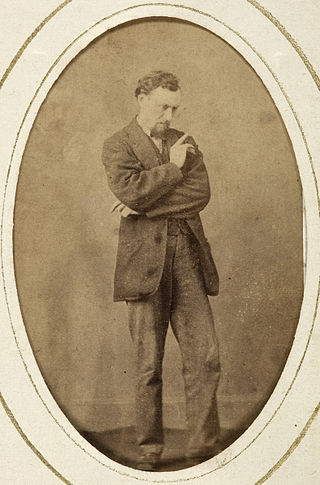Related Research Articles

Anna Jacoba Westra, known as Ans Westra, was a Dutch-born New Zealand photographer, well known for her depictions of Māori life in the 20th century. Her prominence as an artist was amplified by her controversial 1964 children's book Washday at the Pa.
New Zealand photography first emerged in the mid-nineteenth century, and over time has become an important part of New Zealand art. A number of photography associations exist to support photographers in New Zealand.

Samuel Bourne was a British photographer known for his prolific seven years' work in India, from 1863 to 1870. Together with Charles Shepherd, he set up Bourne & Shepherd first in Shimla in 1863 and later in Kolkata (Calcutta); the company closed in June 2016.
John Brian Brake was a photographer from New Zealand.

Walter Bentley Woodbury was an inventor and pioneering English photographer. He was an early photographer in Australia and the Dutch East Indies. He also patented numerous inventions relating to various aspects of photography, his best-known innovation being the woodburytype photomechanical process.
Laurence Geoffrey Aberhart is a New Zealand photographer.

Theodorus Johannes Schoon was a Dutch-born New Zealand artist, photographer and carver.
Mark Adams is one of New Zealand's most distinguished photographers.
George Leslie Adkin was a New Zealand farmer, geologist, archaeologist, ethnologist, photographer, tramper and environmentalist. As an amateur scholar he made a significant contribution to the study of natural sciences in New Zealand.

Alfred Henry Burton is a nineteenth-century New Zealand photographer.

Walter John Burton (1836–1880) was a New Zealand nineteenth-century photographer.
Burton Brothers (1866–1914) was one of New Zealand's most important nineteenth-century photographic studios and was based in Dunedin, New Zealand. It was founded by Walter John Burton (1836–1880) in 1866 as the Grand Photographic Saloon and Gallery and was situated in Princes Street, Dunedin.
Frederic Hardwicke Knight, QSO was a London-born photographer, historian and collector who emigrated to New Zealand in 1957 to take up a medical photography position in Dunedin. He lived at Broad Bay until ten months before his death at a Dunedin nursing home. His publications include New Zealand's first comprehensive photographic history, many compilations of early Dunedin and Otago photographs, biographies of several early New Zealand photographers and of British photographer William Russell Sedgfield, three books of architectural history and a seminal history of the Otago Peninsula. He was awarded a QSO in 1991. An eccentric polymath, Knight was well known for his striking appearance, his ramshackle Broad Bay cottage crammed with his collections and his self-proclaimed exploits, most notably his claim to have found timbers on Mount Ararat that might have been Noah's Ark.
František Simon Hofmann, widely known as Frank Simon Hofmann was a Czech photographer who was recognised for his art in both Europe and New Zealand.

Fiona Dorothy Pardington is a New Zealand artist, her principal medium being photography.
Peter Chanel Peryer was a New Zealand photographer. In 2000, he was one of the five inaugural laureates of the Arts Foundation of New Zealand.
Mary Elizabeth Greenwood was a New Zealand photographer. She was an early promoter of the autochrome photographic process in New Zealand. Her work is held by the Museum of New Zealand Te Papa Tongarewa and by the National Library of New Zealand.
Harriet Sophia Cobb was a New Zealand photographer. Her works are held in the collection of the Museum of New Zealand Te Papa Tongarewa. Cobb operated two successful photography studios in the late 1800s and into the 20th century.
Gladys Mary Goodall was a New Zealand photographer whose work was used for scenic postcards of the country. Her photographs are held in the collection of Museum of New Zealand Te Papa Tongarewa and the National Library of New Zealand.
PhotoForum Inc. is a non-profit New Zealand photography organisation founded 12 December 1973 in Wellington "dedicated to the promotion of photography as a means of communication and expression," and is also the title of its magazine, first published in February 1974.
References
- ↑ W. Main, Bragge’s Wellington and the Wairarapa, inside sleeve, Millwood press, 1974
- ↑ McCredie, Athol (2015). New Zealand photography collected. Wellington, New Zealand: Te Papa Press. p. 91. ISBN 978-0-9941041-4-4. OCLC 906122347.
- ↑ W. Main, Bragge’s Wellington and the Wairarapa, pp. 7–19, Millwood press, 1974
- ↑ Nineteenth Century New Zealand Photographs, J. Turner, n.d.
- ↑ W. Main, Bragge's Wellington and the Wairarapa, p. 10, Millwood press, 1974
- ↑ "Home". 22 January 2016.